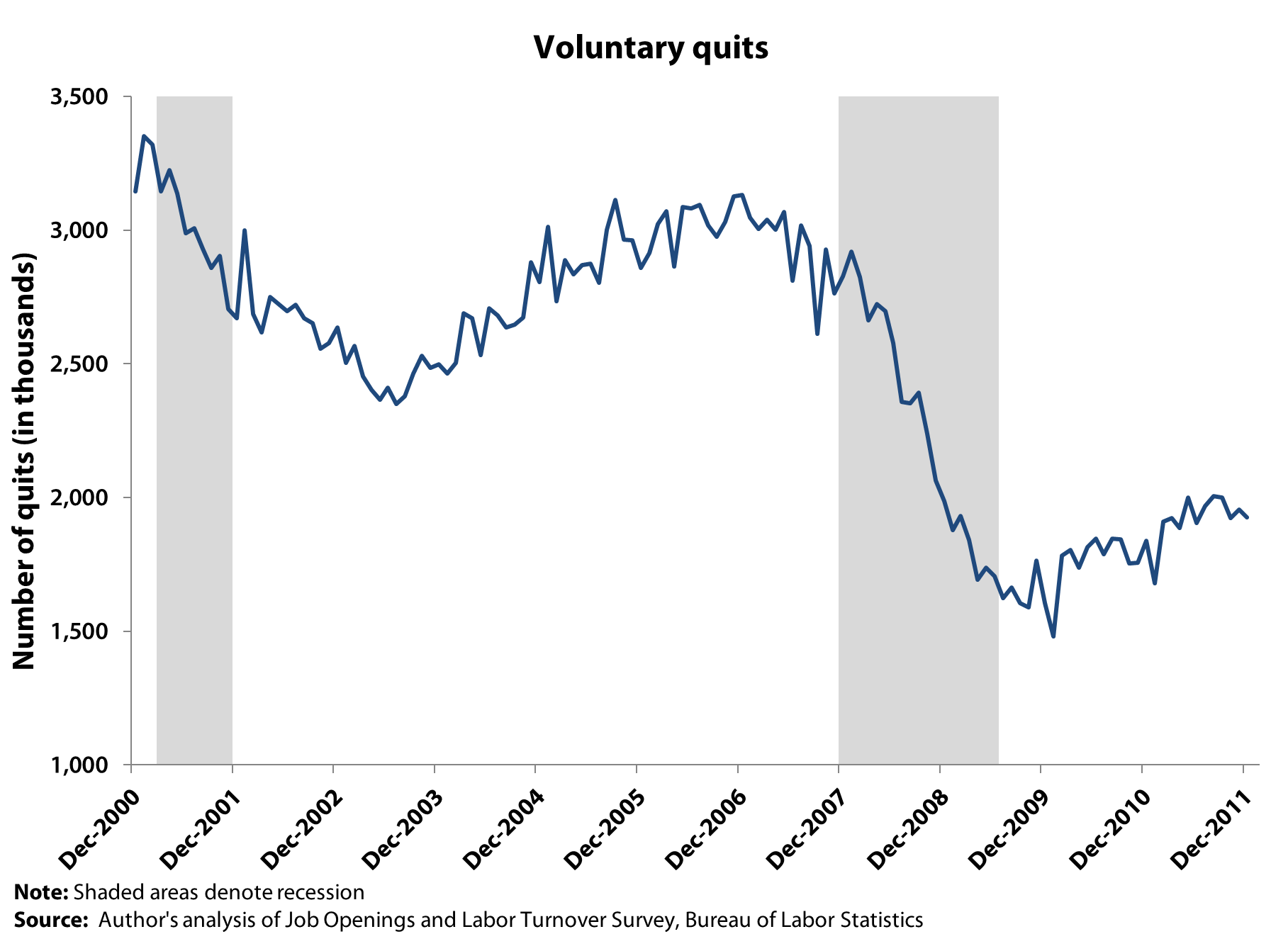This piece originally appeared on U.S. News & World Report’s website
An extremely useful measure of the health of the labor market is, perhaps surprisingly, the number of voluntary quits. All else equal, a larger number of voluntary quits represents a labor market where job opportunities are more plentiful. When job opportunities are plentiful, employed workers have the chance to change jobs that are a better match for their skills, experience, and interests and where they are more productive and command higher wages. During downturns, not only does hiring go down, so does the number of voluntary quits, as outside job opportunities become scarce.

The figure above shows the number of voluntary quits over time. Between 2007 and 2009, the average number of voluntary quits dropped by more than 40 percent, from 2.9 million per month to 1.7 million per month. It has picked up somewhat since that time, but by the end of 2011 it was still 34 percent below its 2007 level. Three useful observations from this figure are the following:
- The low level of voluntary quits demonstrates how persistent high unemployment hurts wage growth for workers with jobs. The lack of outside options reduces a crucial avenue for individuals to see wage growth (changing jobs). Furthermore, with limited outside options for their workers, employers do not have to pay substantial wage increases to keep the workers they need. The result has been a dramatic slowing of wage growth since the start of the recession.
- The lack of improvement in quits is a bright red flag in the sea of optimism about recent labor market indicators. If it were true that job opportunities had improved substantially in the last few months, we would expect to see voluntary quits increasing as not just unemployed workers but also the currently employed snapped up those opportunities. However, the number of quits has seen no improvement since early last summer. (And note, while the latest Job Openings and Labor Turnover Survey data available are for December, the December survey straddles the December and January payroll employment survey.)
- The low level of voluntary quits provides yet more evidence that the key issue behind today’s persistent high unemployment is a lack of job opportunities rather than workers not having the right skills for available jobs. By the very fact of their employment, employed workers have demonstrated that they have skills that are needed in today’s economy. The fact that these workers too are unable to find new job opportunities shows that it is not that today’s unemployed workers don’t have the right skills, it is that the job opportunities just aren’t there. For further evidence on this, see this recent post.
